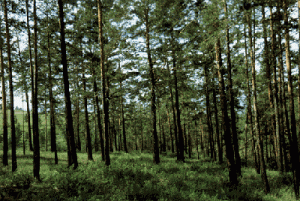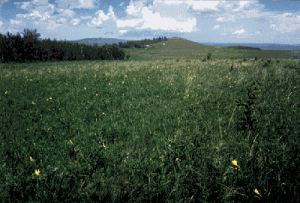Institute of General and Experimental Biology, SB RAS, Ulan-Ude
Head of the Institute:
Vladimir M.Korsunov, Doctor of Biological Sciences, Professor
6 Sachyanova St., Ulan-Ude, 670047, Russia
Tel.: (3012) 33-12-11, Fax: (3012) 33-01-34
email: biolog@butiatia.ru
Principal researchers:
T.G. Boikov, Ph.D., Head of the Sector of Floristics and Ecology of Forest Resources
B.I.Dulepova, Doctor of Biological Sciences, Prof.
N.E.Shvezova, Ph.D., principal researcher
Yu.D.Charitonov, Ph.D., principal researcher
Yu.A.Rupyshev, graduate student
N.V.Pary, graduate student
Project objectives
Checking the hypothesis about a significant non-homogeneous floristic and ecologo-phytocoenotic diversity of the forest-steppe ecosystem, analysis of the spatial structure, dynamics of vegetation, clarification of condition on dynamic directions borders of forest belt under the influence of global climate change and anthropogenic pressing, evaluation of the stability of the forest community under other conditions of the natural environment.
Background and significance of objectives
Preliminary data has been obtained following investigation of the birch forest-steppe and concrete flora zonal surroundings in other parts of the Baikal region. It has been established that the birch ecosystems of the forest-steppe, considered in different parts of area, distinguish significant in the diversity of structures of vegetation and are non-homogeneous in floristic composition between themselves and in the composition of concrete flora. Intensive mastering of the vegetable cover of the Baikal region has brought forth a number of priority problems – need to create measure systems on rational use, reproduction and conservation, as a natural system component. Under sufficient attention to steppe and forest flora (Malyshev, 1979; Peshkova, 1972) questions of studying the structure of vegetation is reflected weakly, difficulty of the structure of kolki forest consists in that that here are important botanist-geographical units of different rank: zonatal, inside zonatal, phytocoenoses and their combinations. Here pass borders of two zonations, which occupy particular botanical and landscape borders. On a small territory there are both a continuum and a discontinuity of vegetation. Kolky forest of Transbaikalia presents another complex of vegetation than European and Western Siberian ones. Here they show the landscape phenomenon of Central Asia and mark a whole zonation expositional combinations of forest, steppe, shrub and other communities arid climate. Unlike in Western Siberia, where such forest are presented as birch forest-steppe, in Transbaikalia they are presented on the north – birch and larch (Larix gmelinii), west – larch (Larix sibirica), in central part – pine forest variants, but in East Transbaikalia zonal birch and shrub of relic variants. Hitherto, flora and vegetation of these kolki forests were studied mainly, or in the complex with steppes, or with forest. Their structure or landscape formation are not studied. Interest in plain forests appears, besides, on the one hand, in connection with global climate change, on the another, in connection with their rational economic use. Herewith, in the first event, on the border an landscape can be discovered observably changed in the composition and structure of the vegetable cover, explaining this suggestion (warming and xerophytism of the environment). Systematic flora studies and vegetation of forest-steppe of the Baikal region have not yet been carried out. scientific information is absent. No scientific information is available on the influence of global climate change in forest-steppe vegetation and fluctuation of borders of forest-steppe to which we in the report before expressed anxiety for want of sufficient material. Taking into account the information about flora and vegetation forest-steppe ecosystems, their structure, productivity and modern condition of the Baikal region we suggest this project be carried out.
Research plan: approaches and methods
Investigation would be conducted by the method of knowledge of local flora on main botanist-geographical objects (Theoretical and methodical problems of comparative floristics, 1987). Model objects take ecosystems of forest-steppe situated in the meridian and in high-aspect. Ecologo-phytocoenotic analysis of vegetation, full geobotanical description of vegetation are conducted on ecologo-geobotanical profiles and account areas. The last also analyses some elements of productivity and age form of vegetable components – trees (Program and methods biocoenotic investigations (1974). The method of concrete flora (1987) has recognised a base, studying separate flora of territory and is also used in the floristic operation by other researchers (Vodopjanova,1984; Malyshev, 1979·; Revushkin, 1988 and the others.). Geobotanical profile – a classical method in the analysis of vegetation, using on the colleague a landscape allows an opening, leading indices defining condition of ecosystems.
Expected results
Will be received information on natural situations on the territory of spreading forest-steppe, formed a floristically lists of forest-steppe ecosystems and concrete flora a territory an surround (forest, steppe).
At presence essential represent materials is expected that will give a statistical evaluation of significant migrations of species plants in an forest-steppe ecosystems from the territory to verge, be shown influence climate and anthropogenic factors in floristic compositions and structure an forest-steppe ecosystem and fluctuation, and spatial position of borders forest-steppe.
List of publications of participants related to the project
-
Boikov “.G., Dulepova B.I. and the others. Undersized Apricot-Ulmus (Armeniaca sibirica-Spiraea aquilegifolia- Arteisia gelinii- Lespedeza juncea- Carex pediformis) Book of Siberia xerophytic forest // Green book of Siberia: Rare and Requiring protection plant communities. ñ Novosibirsk: Science, 1996. ñ P. 139-141.
-
Boikov T.G. Rupishev Y.U. Expositional thrive and distribution of base formations kolky forests Transbaikalia. – Chita, 1997.
-
Boikov T.G., Anenchonov Œ.¿., Pjchalova T.D., Charjtonov Yu.D. et al. Flora of Transbaikalia natural national parks. ñ Ulan-Ude, 1991. ñ 137 p.
-
Parry N.V., Boikov “.G. A Relic shrub community in Baikal region: some particularities of their development and // Report Baik. internat. stud. forum. ñ Irkutsk, 1997. ñ P. 269-270.
-
Boikov T.G., Dulepova B.I. Apricot and Ulmus-apricot (Armeniaca sibirica+Spiraea pubescens) shrub-steppe // Green book of Siberian: Rare and Requiring Protection Plant Communities. ñ Novosibirsk: Science, Siberian publishing firm RAS, 1996. ñ P. 72-73.
Fig. 1. Pine kolky on masterred ploughed field of Transbaikalia territory (Russia)
Fig. 2. Larch forest-steppe of Selenga average mountains (West Transbaikalia, Russia)
Fig. 3. Birch kolky forest of East Transbaikalia (in the foreground is Hemerocalis minor steppe)



